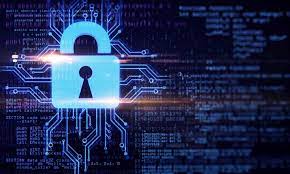In the current digital era, prioritizing cybersecurity is crucial due to the increasing occurrence of cyber threats and attacks. Businesses must establish a robust cybersecurity strategy to safeguard their interests. This strategy ensures the protection of sensitive data, prevents unauthorized access, and shields against potential breaches. Managed IT Services play a vital role in establishing and maintaining a strong cybersecurity framework. In this article, we will explore the key elements of a robust cybersecurity strategy and analyze how managed IT services can boost its effectiveness.
In today’s digital age, businesses rely heavily on technology and interconnected systems. Nevertheless, it exposes individuals to diverse cyber risks, including hacking, data breaches, malware, and phishing attacks. To ensure protection against these hazards, organizations require a strong cybersecurity strategy that incorporates multiple layers of defense.
Assessing Vulnerabilities and Risks
To establish a strong cybersecurity strategy, it is essential to evaluate the vulnerabilities and risks confronted by the organization as the initial step. This involves identifying potential entry points, analyzing the potential impact of a security breach, and understanding the value of the organization’s digital assets. Conducting thorough risk assessments helps in prioritizing security measures and allocating resources effectively.
Establishing Strong Perimeter Security
A robust cybersecurity strategy begins with establishing strong perimeter security. This includes implementing firewalls, intrusion detection systems, and secure network configurations. By creating a secure perimeter, organizations can prevent unauthorized access to their networks and systems.
Implementing Secure Authentication Mechanisms
Robust authentication mechanisms are crucial for ensuring that only authorized individuals can access sensitive information and systems. One can accomplish this by incorporating multi-factor authentication (MFA), utilizing biometric authentication, and enforcing robust password policies. Secure authentication mechanisms significantly reduce the risk of unauthorized access.
Regular Security Audits and Updates
Cyber threats are constantly evolving, making it crucial to regularly conduct security audits and updates. This task entails ensuring that software and systems are regularly updated with the most recent patches and security fixes.
Regular audits help identify vulnerabilities and ensure that the organization’s cybersecurity measures are effective.
Educating Employees on Cybersecurity Best Practices
Human error is one of the leading causes of cybersecurity breaches. Therefore, it is vital to educate employees on cybersecurity best practices. This includes training them on identifying phishing attempts, creating strong passwords, and being cautious while accessing unfamiliar websites or downloading files. A well-informed workforce can significantly enhance the overall cybersecurity posture of an organization.
Creating Data Backup and Recovery Plans
Data loss can have severe consequences for businesses. To mitigate the risk of data loss, organizations should establish robust data backup and recovery plans. Regularly backing up critical data ensures that it can be restored in the event of a breach or system failure.
Monitoring and Detecting Intrusions
Continuous monitoring of network traffic and system logs is crucial for detecting and mitigating potential intrusions. Intrusion detection systems and security information and event management (SIEM) tools can help identify suspicious activities and potential security breaches in real time.
Incident Response and Remediation
Having a clearly defined incident response plan is crucial in the event of a security incident. This plan must detail the necessary actions to be executed when a breach occurs, encompassing containment, investigation, and recovery procedures. A robust incident response plan minimizes the impact of a breach and facilitates quick remediation.
Continuous Security Monitoring
Cybersecurity is an ongoing process that requires continuous monitoring and adaptation. Regularly reviewing security measures, conducting vulnerability assessments, and staying updated with the latest security trends are essential to maintain a robust cybersecurity strategy.
Compliance with Regulatory Standards
Organizations must comply with various regulatory standards and industry-specific guidelines concerning cybersecurity. Adhering to these standards not only ensures legal compliance but also helps in establishing a strong security foundation.
Collaboration with Managed IT Service Providers
Managed IT service providers play a crucial role in enhancing an organization’s cybersecurity strategy. They bring specialized expertise and resources to the table, offering proactive monitoring, threat detection, and incident response services. Collaborating with managed IT service providers can strengthen an organization’s cybersecurity posture and provide access to cutting-edge security technologies.
Conclusion
An organization’s ability to safeguard its digital assets from constantly changing cyber threats relies heavily on the implementation of a strong cybersecurity strategy. By following the key elements discussed in this article, such as assessing vulnerabilities, establishing strong perimeter security, educating employees, and collaborating with managed IT service providers, organizations can significantly enhance their cybersecurity posture. Keep in mind that maintaining cybersecurity demands consistent vigilance, adaptability, and adherence to established protocols.
